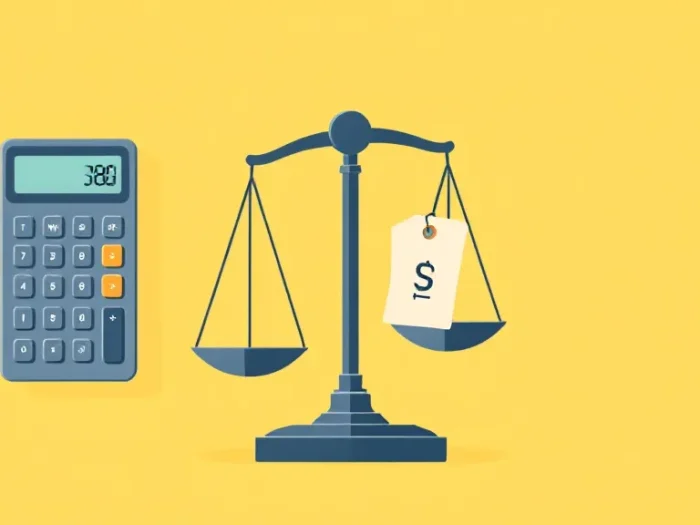Intrinsic value, the true underlying value of a company, is a cornerstone of value
investing. Warren Buffett, one of the most successful investors of all time,
emphasizes its importance. This article explores three methods that Buffett uses to
calculate intrinsic value, providing you with tools to assess the true worth of a
stock.
Understanding Intrinsic Value
Intrinsic value represents what a company is truly worth, independent of its current
market price. If the market price is below the intrinsic value, the stock is
considered undervalued, presenting a potential buying opportunity.
3 Methods Warren Buffett Uses
1. Discounted Cash Flow (DCF) Analysis
DCF analysis is a valuation method used to estimate the intrinsic value of an
investment based on its future free cash flows.
-
How it works:
- Project the company’s future free cash flows for a specific period (e.g.,
5-10 years). - Estimate a terminal value, representing the company’s value beyond the
projection period. - Discount both the projected free cash flows and the terminal value back to
their present value using an appropriate discount rate (often the weighted
average cost of capital – WACC). - Sum the present values to arrive at the intrinsic value.
- Project the company’s future free cash flows for a specific period (e.g.,
-
Buffett’s Perspective: Buffett emphasizes using conservative
estimates for future cash flows and a discount rate that reflects the certainty
of those cash flows. -
Limitations: DCF analysis is sensitive to assumptions, particularly
future growth rates and the discount rate.
2. Owner Earnings
Owner earnings, a term coined by Buffett, represent the cash a company can distribute
to shareholders over its remaining life without impairing its competitive advantage.
-
How it works:
- Start with reported earnings.
- Add back non-cash charges like depreciation and amortization.
- Subtract capital expenditures necessary to maintain the company’s
competitive position. - Adjust for changes in working capital.
-
Buffett’s Perspective: Buffett believes owner earnings provide a
more accurate picture of a company’s profitability than reported earnings, which
can be distorted by accounting practices. -
Limitations: Calculating owner earnings requires judgment and
can be subjective.
3. Replacement Value
Replacement value estimates the cost of replacing all of a company’s assets.
-
How it works:
- Determine the cost of replacing the company’s tangible assets (e.g.,
property, plant, and equipment). - Consider intangible assets like brand value and competitive advantages.
- Determine the cost of replacing the company’s tangible assets (e.g.,
-
Buffett’s Perspective: Buffett often uses replacement value as a
floor for intrinsic value, particularly for companies with strong competitive
advantages. -
Limitations: Replacement value can be difficult to estimate
accurately, especially for companies with significant intangible assets.
Important Considerations
-
No Single “Right” Value: Intrinsic value is an estimate, not an
exact number. Different methods and assumptions will yield different results. -
Margin of Safety: Buffett emphasizes buying stocks at a significant
discount to their intrinsic value to provide a “margin of safety” against errors
in estimation. -
Qualitative Factors: In addition to quantitative analysis, Buffett
considers qualitative factors like management quality, competitive advantages, and
long-term prospects.
Conclusion
Calculating intrinsic value is a crucial skill for value investors. By understanding
and applying methods like DCF analysis, owner earnings, and replacement value, you
can assess the true worth of a company and make more informed investment decisions.
Remember that intrinsic value is an estimate, and a margin of safety is essential.
Related Keywords
Intrinsic value, Warren Buffett, DCF analysis, discounted cash flow, owner earnings,
replacement value, stock valuation, value investing, calculate intrinsic value,
intrinsic value methods.
Frequently Asked Questions (FAQ)
1. What is intrinsic value?
Intrinsic value is the true underlying value of a company, independent of its
current market price.
2. Why is intrinsic value important for investors?
Intrinsic value helps investors identify undervalued stocks, presenting potential
buying opportunities.
3. What is DCF analysis?
DCF (Discounted Cash Flow) analysis is a valuation method that estimates
intrinsic value based on the present value of a company’s future free cash flows.
4. What is “owner earnings”?
Owner earnings, a term coined by Warren Buffett, represent the cash a company
can distribute to shareholders without impairing its competitive advantage.
5. What is replacement value?
Replacement value estimates the cost of replacing all of a company’s assets.
6. Which method is the best for calculating intrinsic value?
There’s no single “best” method. Each method has its strengths and limitations.
Warren Buffett often uses a combination of methods.
7. Is intrinsic value an exact number?
No, intrinsic value is an estimate. Different methods and assumptions will
yield different results.
8. What is “margin of safety”?
Margin of safety is the practice of buying stocks at a significant discount to
their intrinsic value to protect against errors in estimation.
9. Does Warren Buffett only consider quantitative factors?
No, Buffett also considers qualitative factors like management quality and
competitive advantages.
10. Can I rely solely on these methods to make investment decisions?
While these methods are valuable, they should be used as part of a comprehensive
investment analysis, not as the sole basis for decisions.



